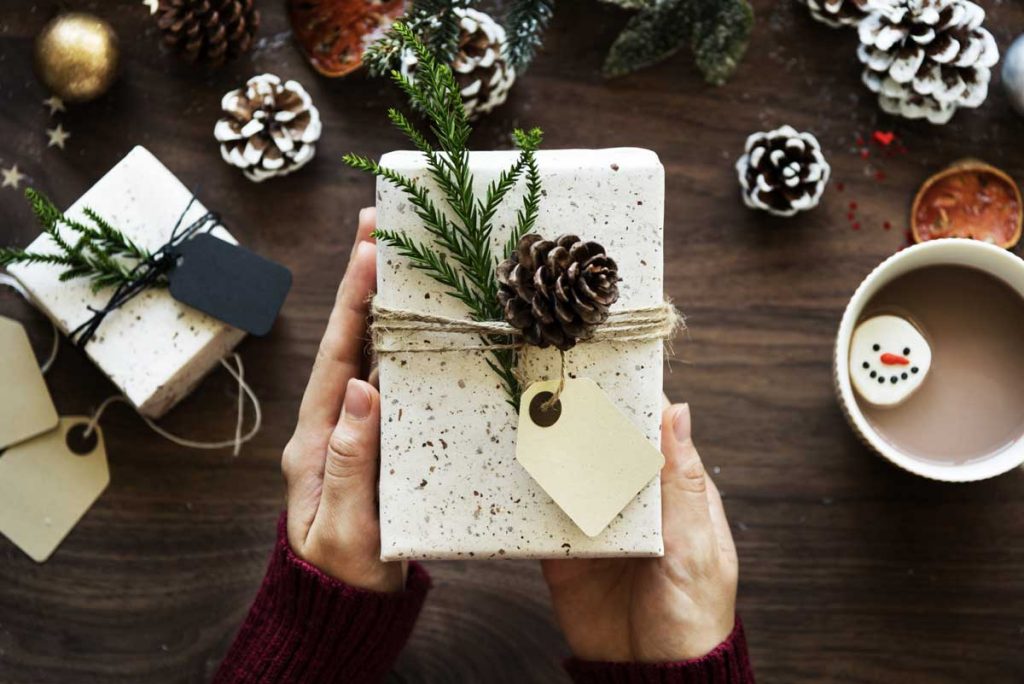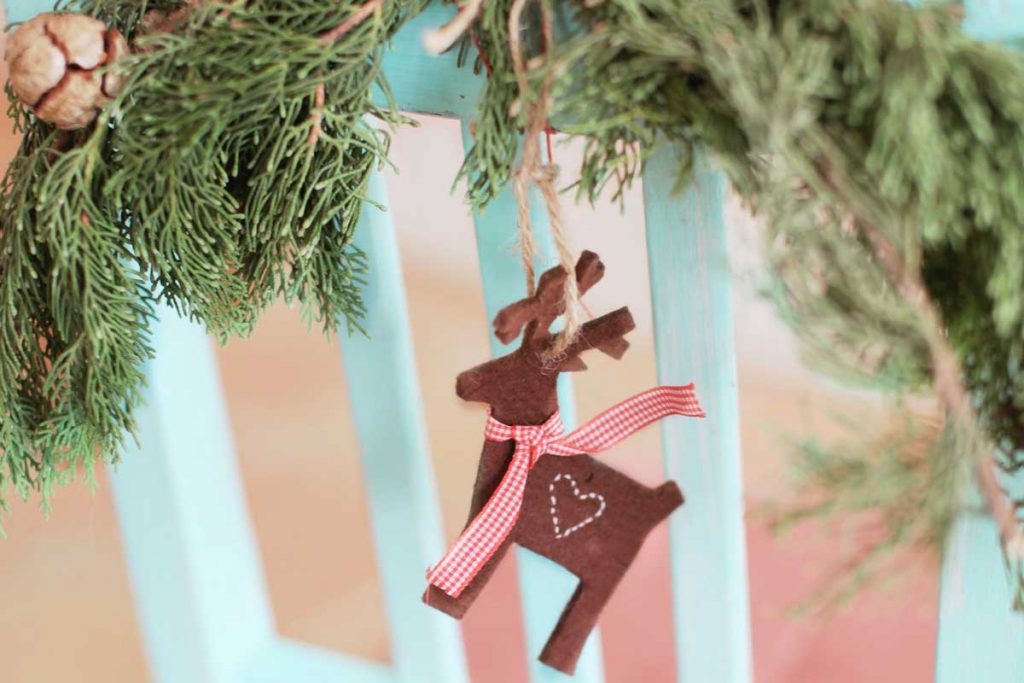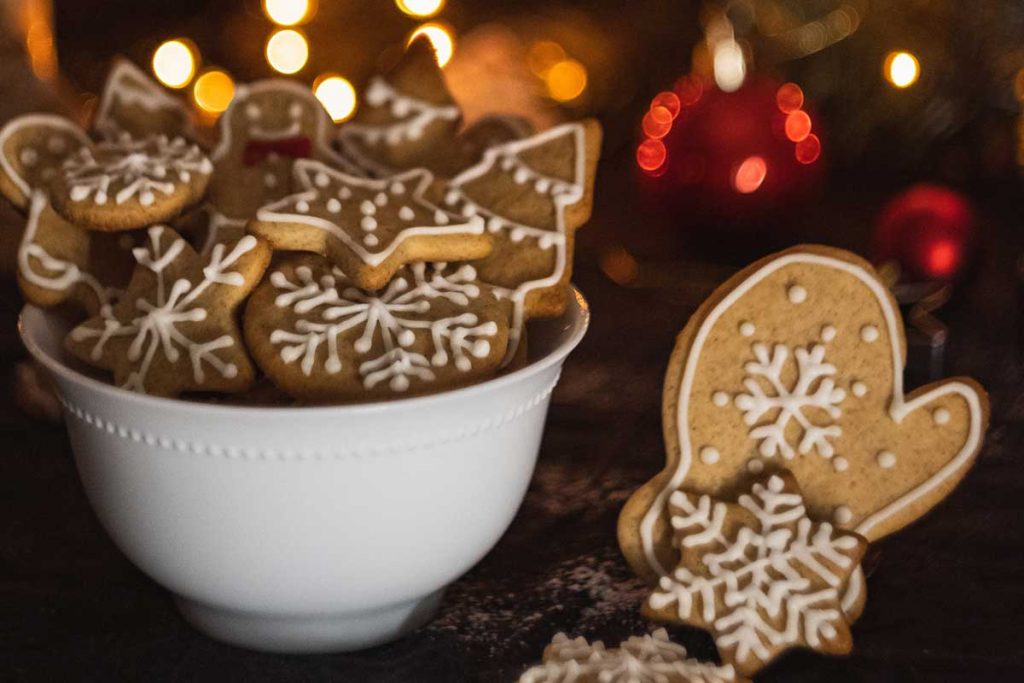Christmas and the holidays around it are not typically a low impact season. Moderation is not a word usually used in relation to the silly season! No one wants Scrooge or the Grinch around at Christmas time but for any of us wanting to reduce our family footprint, we will naturally be looking for ways to celebrate festively in an environmentally aware way.
As Christmas approaches for another year, it is a good time to think about how we can have a lower footprint Christmas this time around.
Values
Before discussing practical ways in which we can reduce our carbon footprint at Christmas, I first want to stop and reflect on values.
I believe that a meaningful and mindful life is a values based one. It is my aim to keep my values at the centre of all I do. Wanting to create a smaller family footprint is a values based choice. For me, I am striving for a smaller footprint because I value the environment and our beautiful planet Earth and believe that we need to leave a better legacy for our children.
When it comes to Christmas and how I want our family to celebrate it, then, I again start with my values. Not being a religious person, Christmas for me is about cherishing and being thankful for family and friends, and celebrating life and remembering those we have lost by carrying on traditions. We show our love for one another with gifts and by spending quality, fun time together. And we share a special meal with many once-a-year foods. At Christmas, my primary value is for family and friends.
My values around the environment, though, don’t have to take a back seat. On the contrary, to really enjoy my Christmas, they need to be honoured. I believe that I can cherish my family and friends and enjoy once-a-year traditions while respecting the environment and my desire to live a simpler life. My values around Christmas do not require the material excess and the excessive busyness that is common at Christmas time these days.
I encourage you to reflect on your own values while you are planning how you want to celebrate a lower footprint Christmas in your own household.

Gift Giving
I have created an entirely separate post on gift giving because it is such a big topic. Pop over and read it in full. In summary, though, gift giving can be such a large part of the excess and waste at Christmas time, it is an area to have a really good think about.
Quality not Quantity
Gift giving can bring a lot of joy to both the recipient and the giver. While some families might make the choice not to give gifts, that is a rare thing and certainly not what my family have chosen and I do not believe it is contrary to having a lower footprint Christmas. However, we do try to limit the number of gifts and the value of them. We can express our love and appreciation for our loved ones without showering them with many gifts. Excess, I believe, dilutes the meaning of them in any case.
One way to avoid the excess is to organise a gift exchange sometimes called a ‘Secret Santa’ or ‘Kris Kringle’. This works particularly well between a group of adults.
Low-waste Options
When it comes to buying gifts, there are a number of ways to minimise the impact they will have on the environment during their lifetime. Such as:
- giving experiences rather than physical gifts;
- giving consumable gifts;
- selecting practical gifts the recipient needs and will be used for a long time;
- giving gift vouchers (preferably not the plastic card kind) or cash so the recipient can buy what they need;
- making homemade gifts or seeking out handmade products;
- buying local and from small businesses;
- finding secondhand treasures or regifting items that the receiver will love;
- avoiding plastic in both packaging and product;
- avoiding items that require batteries; and
- wrapping gifts in recyclable, reusable or compostable materials.
This is just a quick run down of my thoughts for lower impact gift giving. See my greener gift giving post for more details and ideas.

Decorations & Lights
Another big area of waste and excess at Christmas is in decoration. Start by considering how much is really enough by addressing with the first principles of waste reduction, REFUSE & REDUCE.
Next look at reusing what you have (REUSE) rather than buying more or finding items secondhand. If you choose to buy something new, natural materials that can be composted (ROT) and recycled materials are the winner here. For inorganic items, consider how durable it will be, if it will have a long life and whether it can be RECYCLED at the end of its life.
And don’t forget, of course, to consider the amount and type of packaging used.
Christmas Tree
Most families put up a Christmas tree. The common advice is to choose a sustainably farmed real tree over a plastic one. If you are looking at buying a tree, one that can be composted at the end of its life is definitely a better choice. However, if you already have a plastic one, use it because often the most environmentally friendly option is the one you already have. The resources have already been used to produce your plastic tree so the more years it is used, the better.
Tree Decorations
To decorate the tree, look for natural materials and avoid buying cheap plastic decorations that will only be used for a season or two. Invest in good quality decorations that will be used for years and even generations to come.
Edible or salt dough tree decorations are also a fun and creative option which can be consumed or composted when the tree comes down.
Tinsel, too, is made of plastic. Durable, plastic free alternatives include strings of pom-poms and felt or fabric decorations or bunting. Less durable but compostable or recyclable options are paper streamers and strings of popcorn.
From birth, each year in their Christmas stocking, my children have received a special Christmas decoration. Each year they enjoy carefully unpacking their box of decorations and hanging each one on the tree. By the time they leave home, they will have a box full of memory-laden decorations to hang on their own tree.
Candles
When buying candles, avoid paraffin wax which is derived from petroleum oil. Look for soy and beeswax candles instead.
Christmas Crackers
Many families, like mine, do not consider the Christmas dinner table properly set without a Christmas Cracker or Bon Bon at each place setting. These ubiquitous Christmas items however usually contain small plastic trinkets and other non-recyclables that more often than not go straight from the dinner table to the bin. Not what we are after for our lower footprint Christmas!
If you, like me, feel that Christmas isn’t the same without the snapping of bon bons, there are options out there that are more environmentally friendly. Also look for those that have a chocolate instead of a plastic trinket in them. Another option is to make your own. The snaps are often available from craft stores or online.
Lights
The Christmas light display has become a Christmas sport of sorts. Competition and peer pressure between neighbours can be fierce. This is definitely an area where excess is rewarded but where our goal for a lower footprint Christmas can be thwarted. If you don’t want to opt out altogether, use the waste reducing principles of REFUSE – REDUCE – REUSE – ROT – RECYCLE to guide your decorating choices. Also look for solar LED lights to reduce energy use.
Advent Calendar
There are so many single use advent calendars marketed to children at this time of the year. Most contain plastic. Creating your own advent calendar is another fun and creative pre-Christmas activity. There are excellent patterns available to sew a reusable fabric one but there are lots of other possibilities that do not take a lot of time such as pegging up envelopes or origami pockets along a string, both of which I have done in the past.
A very sweet, low waste idea for things to put in those 24 pockets instead of trinkets is slips of paper each with a different activity on them. Be warned, however, make them easy to achieve and keep a note of what you assigned for each day so you can be prepared. The last thing you need in December is more stress (and disappointed kids)!
An alternative is a short note for each child with one thing you love or appreciate about them. You could also find a Christmas story and break it into 24 parts and each day you read the next instalment together.
Another option is to put in useful things like stationery and hair ties but if you want an easy and low waste option, I give you complete permission to pop a little sweet treat in there. Hey, it’s Christmas!
Greeting Cards
Sending physical greeting cards carries a lot of embodied waste. It creates paper waste, which is often not recyclable due to inclusions such as glitter, not to mention the energy used to produce, transport and deliver them.
You might like to whittle down your Christmas card list, as we have, to just those elderly relatives for whom we do not have email addresses or move over completely to sending e-cards. You can design them yourself or find a huge range of options online.
Sending an email has been advantageous for us because not only can we send our seasonal greetings and annual newsletter without the printed waste, each year I create an online photo album from our year and share the link with family and friends which, they tell me, they appreciate.
If you do want to send physical cards, look for ones that are recycled paper and are recyclable. Or make your own from recycled materials.

Eating & Drinking
What we eat and drink at this time of year is often very much tied to our family traditions. For me, this is deeply personal as it really is a way to remember people we have lost, particularly my mother who died when I was 25 and who always made Christmas such a special time for our family. I can’t imagine not making Christmas cake and Christmas Pudding like she did. I now also make shortbread to my mother-in-law’s recipe and think of her every time I do. These things hold a lot of important meaning for me. I’m sure you have your own important traditions.
We can carry on these traditions, though, in a way that is in keeping with a lower footprint Christmas. Here are some ideas.
- If you eat meat, choose free-range, high-welfare meat.
- Select seafood that is sustainable and has been responsibly fished.
- Opt for seasonable vegetables and buy local. I love the vibe at our local farmer’s market pre-Christmas!
- Aim not to over cater and also not to go to excess with extra’s such as chocolates and baked treats.
- Use up leftovers in the days following Christmas and make stock from the turkey bones.
- Compost what you cannot consume.
- Recycle what cannot be composted.
- Use real crockery, cutlery and glassware and, of course no drinking straws.
General Tips
In closing this long post, there are a couple of general tips I’d like to share. The first would be to keep the waste reducing principles of refuse, reduce, reuse, rot, recycle in mind. Consider your personal and family values and say ‘no’ to things if it feels right to you. It is ok not to get caught up in the excess that is so prevalent at this time of year.
The next is plan, plan, plan. The more organised I am, the less likely I am to take shortcuts which are not as low impact. It also helps preserve my sanity and, hopefully, Christmas spirit (i.e. not become a cranky cow!)
Finally, slow down. This is a busy and often stressful time of year. If you can reduce what you need to do, I encourage you to do so. Focus on what is really important and take the time to enjoy this special time of year with your family.
Merry Christmas!
[mc4wp_form id=”96″]


